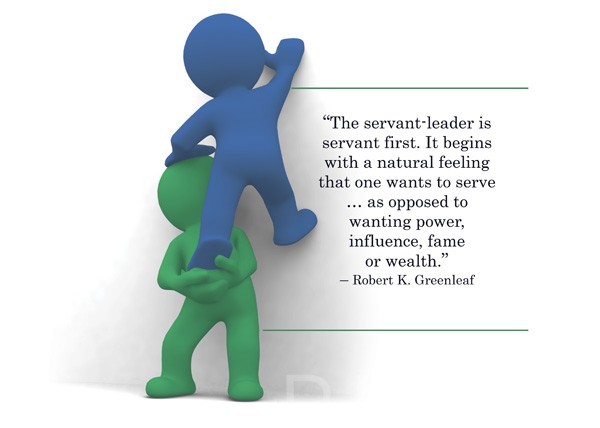
(this article is a chapter of my future book – Conscious Evolution – Crafting Our Way Together)
The concept of the “servant leader” was coined by Robert K. Greenleaf in his seminal 1970 essay, “The Servant as Leader.” The servant-leader concept has had a profound and lasting influence over the past decades on many modern leadership ideas and practices. Leaders with this style serve their communities first. They managed to rise above their self-centeredness. Similarly, leadership in Simon Sinek’s perspective, boils down to three things: selflessness, empathy, and an ability to manage anxiety on your team.
A “servant leader” simply means to be a beneficial presence to others, ready to embrace them with love, to connect with what is alive in them and to willingly offer what might nourish them. It is someone who leads the way toward a world of humanness through her own example. However, even if we don’t become a “leader” for everyone, communicating nonviolently and trying to bring out the best in others, there are great chances to awaken what is alive in them.
The servant leader wants to build around her a space where everyone feels loved and nourished, protected and treated fair, appreciated and valued, encouraged and understood. My desire for “Butterfly” communities is to become such spaces.
The servant leadership is built on an inverse logic, beautifully expressed by Jesus: “Whoever wants to be the first among you must be your servant, just as the Son of Man did not come to be served, but to serve.” (Matthew 20:26-28). This world of interbeing is possible and depends only on us to come forth.
***
This leadership doesn’t request a hierarchy: in a group, we all could be servant leaders! What this leadership requires is selflessness. We all can start from where we are, but consciously head toward overcoming our biases and selfishness.
The leadership aspect is expressed by the fact that our behavior is our conscious choice to create around us a world in which others may thrive. We “lead the way” through our personal example, without imposing anything on anyone.
In order to develop a symbiotic behavior, I need: 1) a new understanding of myself into the social fabric 2) to be part of a group who reciprocates this behavior
We can start behaving as servant leaders in the midst of our world. Even though not everyone will be able to reciprocate, at least we will be “the change we want to see in the world”. Being aware that we are the agents of the evolutionary step further for human species, we are ready to stand for these values in any conditions!
Therefore – because the “achievements” of such a behavior depends on others’ level of consciousness and response – I am not focused so much on “immediate results”, but on my “system”. To act “now” as a servant leader – with peace and joy, with generosity and love, with trust and patience – is my objective. If I succeed in this, moment by moment, I don’t worry about the future results: they will surely come!
The hope that animates me (as long as my “system” works properly) perfectly aligns with the definition of hope given by Vaclav Havel: “Hope is not the same thing as optimism. It is not the conviction that something will turn out well, but the certainty that something makes sense, regardless of how it turns out.”
